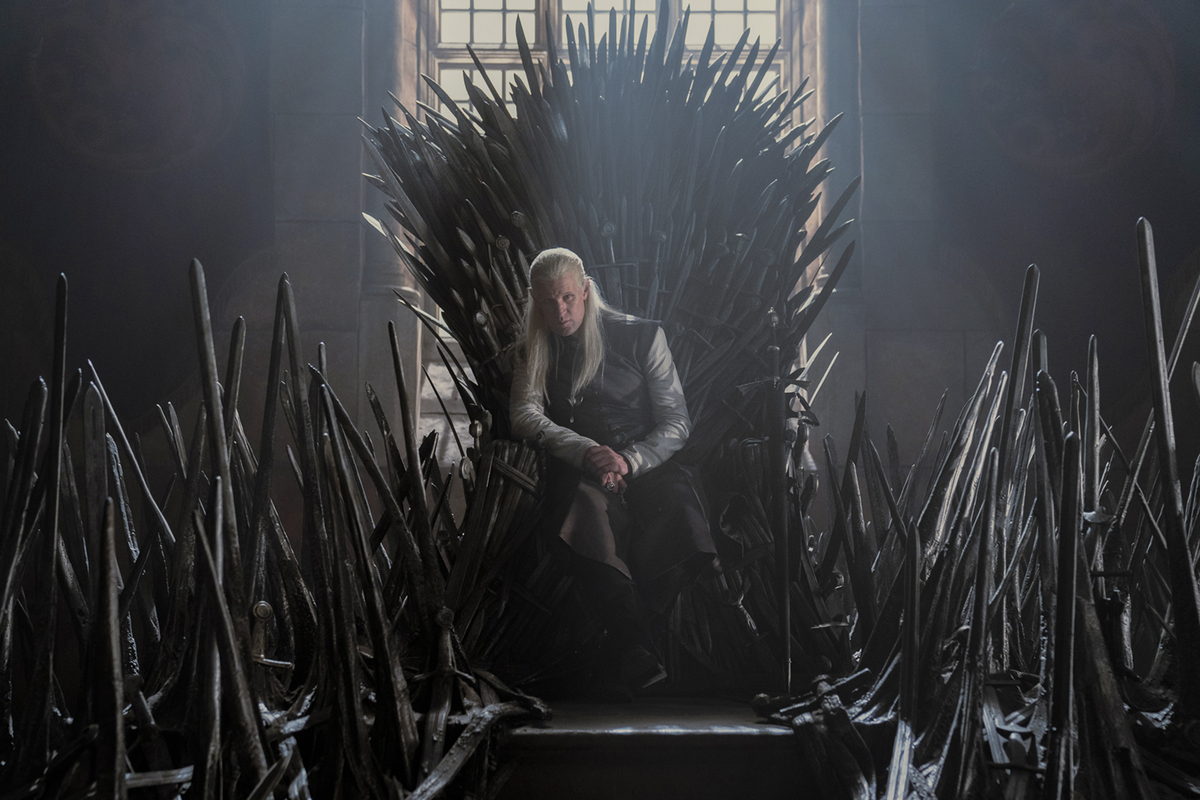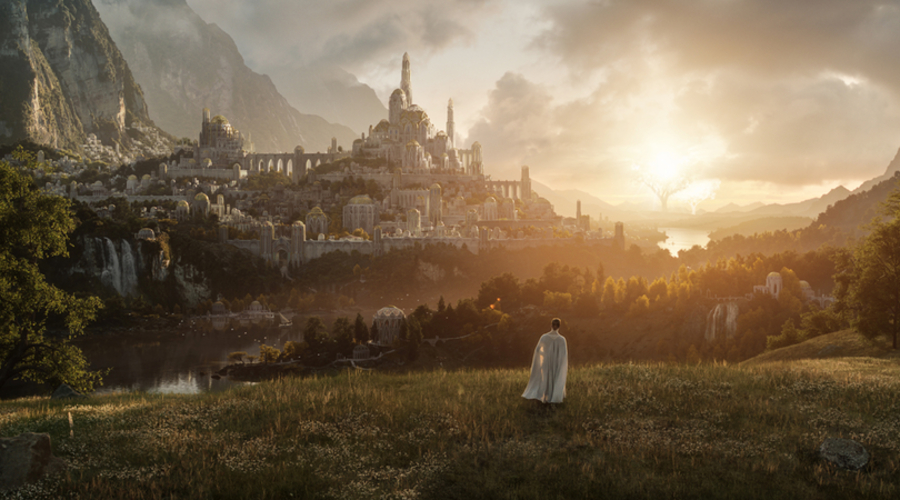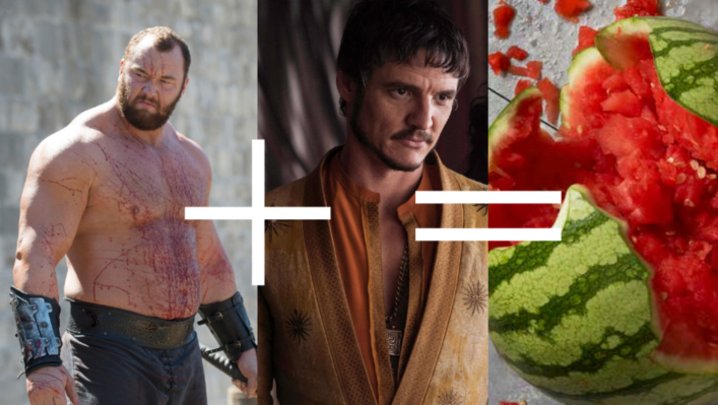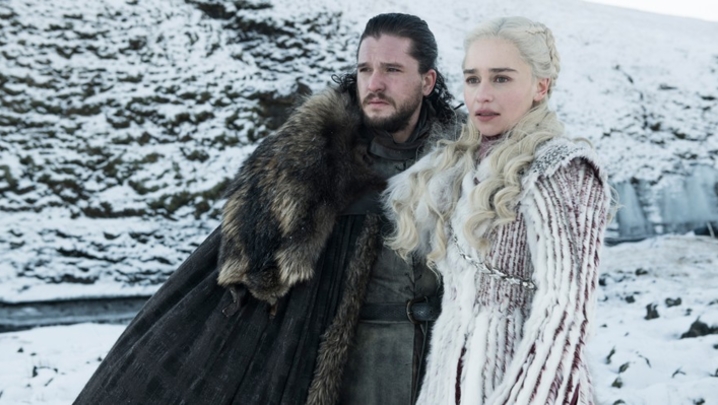Two of the biggest shows of the year, House of the Dragon and The Rings of Power, provide much more than mere escapism, says Tara Conlan.
Magic and myths have ruled popular culture for years. Such is their enduring power that HBO and Sky Atlantic’s Game of Thrones spin-off, House of the Dragon, and Amazon’s The Lord of the Rings: The Rings of Power are big weapons in the wars between the global streaming giants.
But why does high-fantasy drama continue to resonate and pull in huge audiences? Boyd Hilton, Heat magazine entertainment director, thinks there is a “huge appetite” for these shows, partly because fans can lose themselves in a “whole universe meticulously built” by the authors who wrote the books they are based on.
“If you go back to Tolkien and other authors, such as CS Lewis, there has always been a history of this type of fantasy story.”
House of the Dragon is a prequel to Game of Thrones (GoT), set 200 years prior to the original and based on George RR Martin’s book Fire and Blood. Its co-showrunner, director and executive producer, Miguel Sapochnik, agrees that escapism is part of the appeal but tells Television that House of the Dragon “is more rooted in reality than the previous show”.
Whereas GoT had humanoid White Walkers and giants, “we have dragons and that’s about it. If we could treat dragons like a combination of horses and weapons of mass destruction, then I feel we could get into the real drama of the story.”
Novelist and GoT fan Amanda Craig says she is amazed that fantasy is “still something of a dirty secret among literary folk like me who love it. I see it as part of a great literary tradition that includes Homer and also Shakespeare’s more magical plays.”
"It touches tremendously deep aspects of the human heart and imagination..."
Craig thinks it can also satirise or highlight contemporary social and political issues in a way other genres find harder – and it enables audiences to “feel you’re seeing the truth, but not directly… through a glass darkly, as it were. I think it touches tremendously deep aspects of the human heart and imagination and also has this powerful ability to kind of address a lot of contemporary concerns, but at an oblique angle.”
Actor Lloyd Owen, who plays Elendil in The Rings of Power, thinks part of the appeal is down to Tolkien. He had a “profound influence” on the modern-day genre, as he “essentially curated, condensed and revivified ancient Celtic and European mythological tales and poured their eternal truths into a story that all could access”.
That was helped on The Rings of Power by the “mind-blowing scale and astonishing attention to detail” during filming. He says that “seeing the set of the capital city of Númenor for the very first time was very, very special”.
House of the Dragon and The Rings of Power (also a prequel) launch within a couple of weeks of each other. However, Hilton thinks there is room for both, adding that Netflix also has high-profile fantasy series, including The Sandman and The Witcher. He says: “The investment pays off even though the figures are eye-watering. Reportedly, Amazon paid the Tolkien estate around £200m just for the rights to make TV series related to Lord of the Rings.”
Hilton believes it was a “no brainer” for HBO to make House of the Dragon, despite its “epic” cost, because Game of Thrones was a worldwide hit when first shown, and many new fans watch reruns on Sky Atlantic.
Sapochnik, who won an Emmy for his work on GoT, says he did not feel under pressure to create another hit, despite the huge expectations: “It’s like some people don’t feel pain… I don’t have the pressure of those kind of things. I don’t care. That’s why you’re hired.”
The numbers show what an immense feat it was: 10 months of filming, with a 2,000-strong crew working across three countries, 5,000 costumes and four directors. All during a pandemic.
Covid was the show’s biggest challenge, admits Sapochnik. “The logistics were a nightmare, [they] were exhausting [but] one of the... most complex and hardest-to-fathom things was what it did to us.” At the beginning of the pandemic, the production had a weekly meeting for crew who knew or were related to people who had died of Covid to help with any mental health issues.

“So, you’re dealing with helping people to cope with the grief but also keeping working. Then, over time... that compassion started to ebb away and there was this slight meanness that started to exist, which was, ‘I have to look after my own... I don’t have time for this any more’. And that was even harder. So I lament that.”
Despite all the precautions, “we finally got hit by Omicron in December; we lost 80 people in one week and it shut us down.” This highlighted another issue. Unlike GoT, which was shot in Northern Ireland, House of the Dragon’s main lot was in Leavesden, Hertfordshire. And the post-pandemic production boom had led to a shortage of trained workers.
As Sapochnik explains, “There are not enough people with the skill sets to facilitate the number of shows being made because we have a boom in the television industry… around 450 shows are being made, or something insane – we don’t have enough crews to make that many shows.”
He declines to reveal the costs but says: “We had a Covid budget. Without it, we’d have fallen at the first hurdle, pretty much.”
Since his time on GoT – which was “huge and I did a 129-day shoot for just two episodes – everything’s got more expensive.… The costs of the sets were coming in and they were just ridiculous, they were astronomical. I thought: this just can’t be. I know we’re not in Northern Ireland any more, which is cheaper, but it was incredibly expensive.
“Then it turned out that the timber used to construct sets cost more because, during the pandemic, no one was chopping timber.”
"The birthing bed is a woman’s battleground. We needed the birth to be as treacherous, dangerous and violent as the battle taking place in the tournament."
Fortunately, part of the plan for House of the Dragon has been to “pull back” from the massive scale of its predecessor, says Sapochnik – “starting smaller because otherwise you’ve got nowhere to go”.
Partly, this has been due to “the big difference” between the two shows in that the original “spanned multiple families over multiple continents”. Dragon, by contrast, is about one family, mostly in one area, which “allows us to spend more time with the characters and get deeper into them. The whole first season is about the dissolution of the Targaryen family.”
Sapochnik hopes that “if you haven’t seen Game of Thrones, then you don’t need to… this is a story about the decline of an empire and everyone likes a good Titanic story.”
Game of Thrones was notorious for its often extreme violence, and its prequel is unafraid to make its audience wince, but Sapochnik says it is used to make a point. Two graphic storylines are intertwined – a butchered caesarean forced on the queen and men killing each other in a tournament – to show that “the birthing bed is a woman’s battleground. We needed the birth to be as treacherous, dangerous and violent as the battle taking place in the tournament.
“In one of them, two guys are bashing each other’s brains in for no reason whatsoever. In the other, this woman is fighting for her life and essentially being murdered by her husband.
“I watched it recently at a screening and found it really disturbing. I know that’s a good thing because the point hasn’t been lost.”






